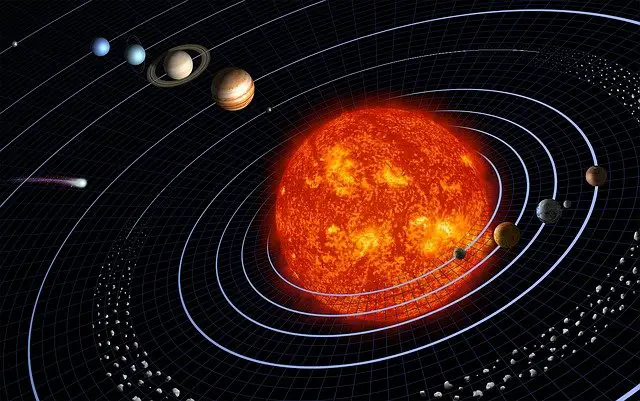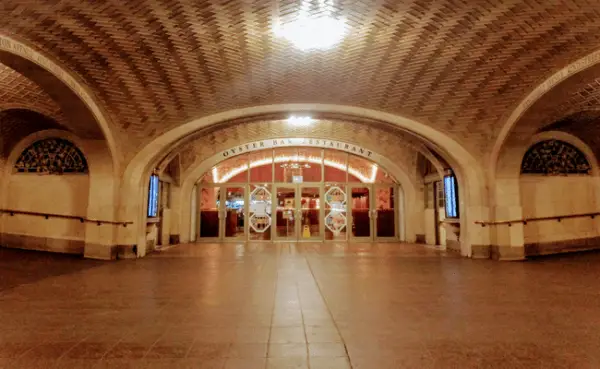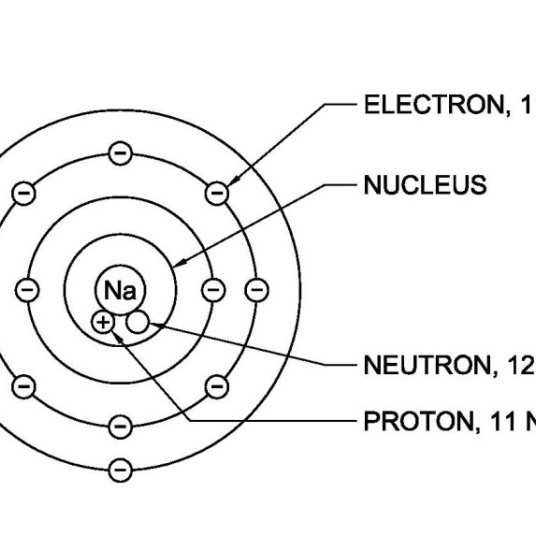Ellipses represent a closed curve formed by points where the sum of the distances from two fixed points (foci) to any point on the curve remains constant.
One of the most thrilling encounters with ellipses is in a room of the National Statuary Hall of Washington D. C.
The oval-shaped room introduces you to a whispering chamber where sound can travel along the walls in a unique way due to its elliptical shape.
Ellipses are special figures resembling circles. They are like circles that are stretched or flattened.
An ellipse is a conic section that is produced by cutting a cone at a certain angle.
Certain features define an ellipse, including:
- Unlike the circle, the ellipse has diameters of different lengths.
- Only 2 of the ellipse’s several diameters bisect it into two identical halves. The two are called axes of symmetry. They are also called the major axis and the minor axis respectively and they are also its longest and shortest diameters.
- An ellipse has two foci (called focus in the singular) which are two opposite points that lie on the major axis separated at equal distances from the center
- Eccentricity is a property that measures how much the ellipse deviates from roundness. An ellipse usually has an eccentricity value of between 0 and 1.
- When we travel from any of the focal points to any point on the ellipse and then to the second focal point, the distance covered stays constant.
- A circle is a special kind of ellipse. Both of its foci are located at some point which is its center.
Here are 10 real-life examples of ellipses.
1. Orbits of Celestial Bodies

Celestial objects like the sun, moon, earth, or stars move along on paths that trace an ellipse rather than a circle. For example, the earth moves around the sun in an elliptical path.
This is based on Kepler’s first law that governs the motion of the planet. It states that the paths of all planets are an ellipse with the sun located at one of the foci.
One useful application of Kepler’s laws is that it makes it possible to correctly predict the future path of bodies such as a comet.
2. Medical Device for Breaking Kidney Stones

Ellipses have a special reflective property that is used to reflect sound waves.
Light or sound waves that are emitted from one focus of the ellipse are easily reflected in the other.
Lithotripter uses an elliptical reflector which creates sound waves that can be used to break up stones.
When a patient is put in a tank of water that is ellipse-shaped and a kidney stone is on one focus, the strong shock waves produced at one focus are directed at the stone which breaks it up.
This is a quick and non-invasive procedure that can be done without admission and recovery is easy.
3. Whispering chambers

There are building spaces that are designed like elliptical domes.
The elliptical shape have some special acoustic properties which enable two people standing in two different foci to hear each other when they are whispering.
For example, St Paul’s Cathedral has been designed with an ellipse shape.
4. Elliptical Trainers

This is an exercise machine that produces a simulation of running or walking. When you run or walk in it, your foot follows an elliptical path.
Some are also fitted with handlebars to enable you to push or pull so that you can operate foot pedals through an elliptical path.
5. Food Shapes

Some foods can be cut in distinctive shapes to resemble ellipses and give a more stylish or refined touch.
For example, sausages or cucumbers can be sliced into elliptical shapes.
Wraps or tortillas that contain food fillings can be shaped into elliptical wedges.
6. Molniya Orbits for Satellite Use

Molniya orbits are orbits that are highly elliptical and are suitable for placing satellites in geostationary orbit (geostationary means not moving with respect to the earth).
Satellites that are placed in the Molniya Orbits can be used for TV broadcasting, weather observation, telecommunications, and early warning systems.
7. Atom Structure and Shape

Electrons that move around the nucleus of an atom do so in an elliptical-shaped path.
The nucleus is not centrally placed but is located at one of the foci of this ellipse.
8. The Ellipse Park of the White House

The President’s Park South, also called the Ellipse, is a park that lies directly south of the White House.
It’s part of the most iconic landscapes of the White House and Washington DC.
9. Elliptical gears

Also known as non-circular gears, elliptical gears are used in automatic and manufacturing machines especially in textiles.
Unlike circular gears which give the same rotary speed and torque, elliptical gears offer adjustable and variable speed and torque.
10. Harmonic oscillator

Ellipses are also used in harmonic oscillators. These devices are used in clocks as an oscillator and also in guitars or violins.
In cars, it’s used in shock absorbers to provide comfortable rides.
Conclusion
There you have it; 10 examples of ellipses in real life.
As you can see, ellipses have many practical uses in life.
They are unique both as an object of art and also for their unique reflective properties that he used in technology.
Nature too is full of elliptical objects both in the cosmic world and as seen in the atomic world.

